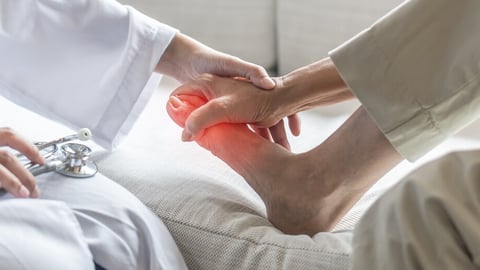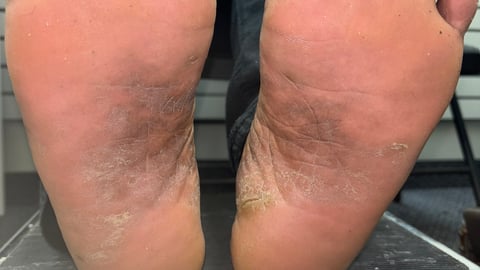High heel injuries take a tumble
The recent five-year anniversary of the beginning of COVID-19 lockdowns led to many reflections on the lasting changes, big and small, the monumental event left in its wake.
One casualty of lockdown? High-heeled shoes. The culprit? A new stay-at-home culture where comfort takes precedence over fashion norms and narrow definitions of femininity.
This shift was not just a boon for flats and sneakers, it had implications for health. During the pandemic, incidence of emergency department visits among women for injuries attributed to high heel use, such as fractures and sprains, declined significantly. Beginning in March 2020, there were 6,300 documented hospital visits related to high heel injuries, a reduction from an average of 16,000 per year over the previous four years, according to research from the University of Maryland (Canadian statistics are unavailable).
Common high-heel injuries
Broken Ankles: One in five high-heel injuries involve broken bones, often ankles, caused by heels breaking or catching.
Stress Injuries: Repeated strain on the foot and leg can cause stress fractures or muscle tears, worsening over time without early signs.
Torn Achilles Tendons: High heels increase the risk of Achilles tendon tears, often requiring surgery and long recovery.
Blisters: Frequent friction can lead to infections or pressure wounds, sometimes with severe complications.
Sprains and Strains: This most common high-heel injuries can worsen without proper rest.
Falling Injuries: High-heel falls can cause back injuries, concussions, fractures or severe cuts.
Source: University of Alabama, Epidemiology of High-Heel Shoe Injuries in U.S. Women
Data from trend-watchers would suggest the move away from high heels has staying power. The U.S. market research firm NPD Group Sales confirms that high-heel sales dropped by 65% year-over-year during the second quarter of 2020.
More recently (late 2024), research by the shoe retailer Kurt Geiger found that shoes with heels at least four inches high now only account for a sixth (17%) of non-flat shoe sales, compared with almost half (47%) in 2014. Sales of two-inch mid-heel styles have doubled.
Meanwhile, Footwear News itemized the five biggest trends the Paris runways were showing for Spring 2025, and not one high-heeled shoe was among them.
Read: Ballet flats are back. Here’s what the research says about how they affect feet
Fashion meets foot function
To avoid foot injuries, the Pedorthic Association of Canada says on its website that patients should check the shoe to see if the heel is stable and the front of the shoe is as wide as the foot. Also:
- Select heels that are 2.5 cm or less and have a solid, wide base. This will maximize your support and reduce the pressure on the ball of your foot.
- Limit heels higher than 2.5 cm for special occasions. When purchasing higher heels select ones that have a platformed forefoot and incorporated toe spring as they will provide some cushioning to the ball of your foot.
- Avoid heels that have very narrow toes; look for styles that accommodate your foot’s length and shape. "If your high heels don’t fit well you are at risk of developing corns, bunions, blisters and even nerve damage."
The Canadian Podiatric Medical Association offers these additional tips for patients:
- Lower heel height by even an inch, which will make a big difference.
- Do a lot of careful calf muscle stretching if you wear high heels and are active in sports. Calf muscle undergo shortening from high heels and will be over-stressed once they are placed in a lower sports shoe.
The Maryland researchers are doing a followup study on whether the incidence of injuries has risen as people have resumed social and workplace activities and whether the shift toward lower-risk footwear, such as flats and sneakers, is here to stay. For the recent study visit: Pandemic-related decline in injuries related to women wearing high-heeled shoes: Analysis of U.S. data for 2016-2020





